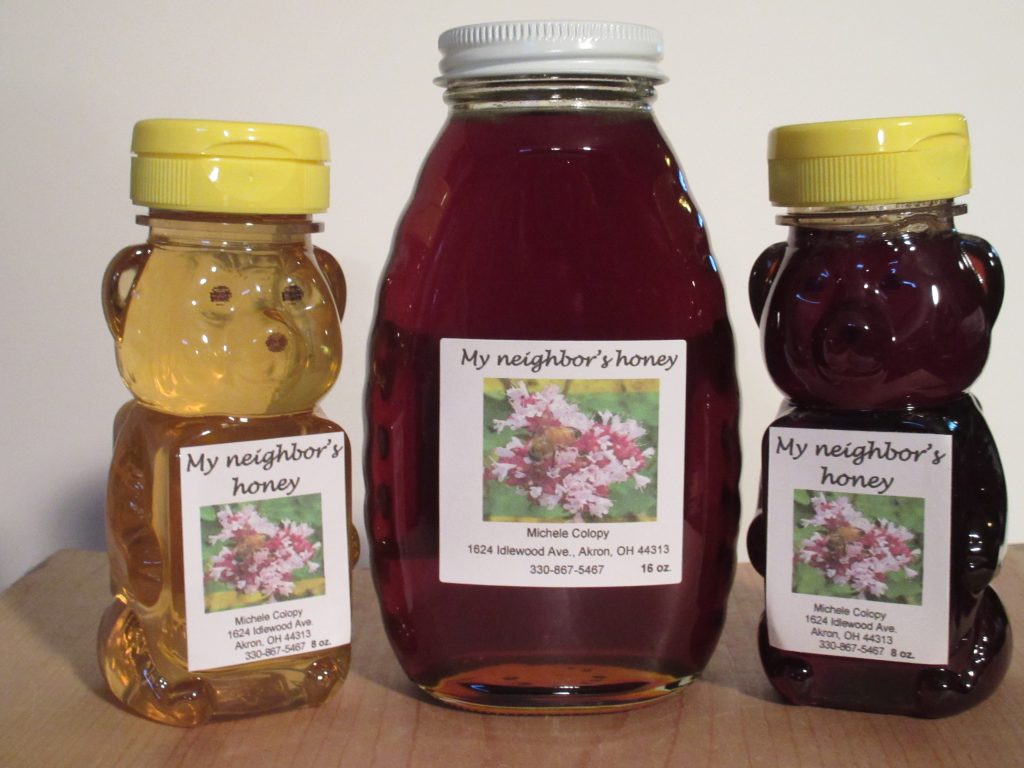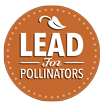by Becky Johnson, Vice President, LEAD for Pollinators Board of Directors
Infused, processed, pasteurized, raw, comb, real, pure- all things you may read on your label of honey bought at the store. Which one is best? And, how can you tell?
Facts
Almost 76% of honey found at grocery stores has been found to be adulterated in some way. This means that the honey has been heated or treated to mask properties- the good, the bad and the ugly. Once heated to 116 degrees, honey loses most of its beneficial properties. Imported honey contributes 75% of sales in the USA, meaning only a mere 25% was actually produced here. It is imperative to know the area that your honey came from and the way the beekeeper extracted it- especially for medicinal or allergy treatment use. Some honey can be dark as night while others are almost clear. The strongest tasting is usually the darkest, but also contains the highest amounts of enzymes and minerals, and other antioxidants. Typically, most light honeys are created by honey bees during the spring and early summer while the darker colors are summer or fall harvests. The color and taste are totally dependent upon what the bees foraged in the area.

Diversity
Honey is extremely diverse. Each harvest, hive, season and area vastly contrast with the last. Honey bees fill their comb with honey through a very extensive process, and thousands of cells are filled each season. Each individual cell has the possibility of having different nectar from flowers- making each cell unique. How do they do it? Female honey bees
called “worker” honey bees venture out of the hive in search of resources to feed their colony, or family. They communicate where the best sources are found through specific communications within the hive. Depending on the
forage utilized, the honey crop produced can crystallize, or solidify quickly or very slowly due to a high level of water content in the nectar. The honey will look like sugar when it solidifies, but you can easily return crystallized honey to liquid honey by letting the jar of honey soak in warm water (less than 116 degrees) until it reverts to liquid if that is what you prefer. There is a joke in the beekeeping world- Rapeseed, also known as Canola, “solidifies on the way back to the hive.” With this information you now know that when you purchase honey, you will never seemingly get the same honey again!
So, what’s the best honey?
Which one is best? That depends on what you want to do with it and your personal taste! Raw honey has not been processed in any form, making it excellent for almost anything. Comb honey is straight from the hive- there are several different methods beekeepers use to receive this from their hives, with the honey already packaged in edible beeswax.
Comb honey is the most revered as it is hard to tamper with and in its’ most natural state. Creamed honey is normally raw honey in a more creamed form- perfect for spreading on toast or biscuits and other foods. Infused honey has other ingredients, such as herbs and spices, to give it a different flavor. Infused honey is wonderful when looking to give honey as a gift or considering the multiple benefits of the additive and the honey combined. The only bad honey is “honey” that has the label but is not truly only containing honey from honey bees,it may have been heated, treated,
micro-filtered or diluted. Always read your labels- look for the source and the ingredients. The USDA requires any additives to be listed on the label. The simple way to secure quality honey is to support your local beekeepers.
Buy Local
Real honey is produced by honey bees that are taken care of by beekeepers. With over ~125,000 beekeepers in the United States, there are lots of opportunities to experience real, local honey. Many are families, but almost all use the money made on selling honey and hive products to continue caring for their bees. The best part about buying local is you have the chance to meet a beekeeper, ask questions about bees and ensure you are getting the best product! There are a myriad of different honeys and hive products, so try several! Not sure where you can get real, true local
honey? Look up your local bee club online or on social media, or ask around- You will surely meet several of the hardest working people- local beekeepers.
